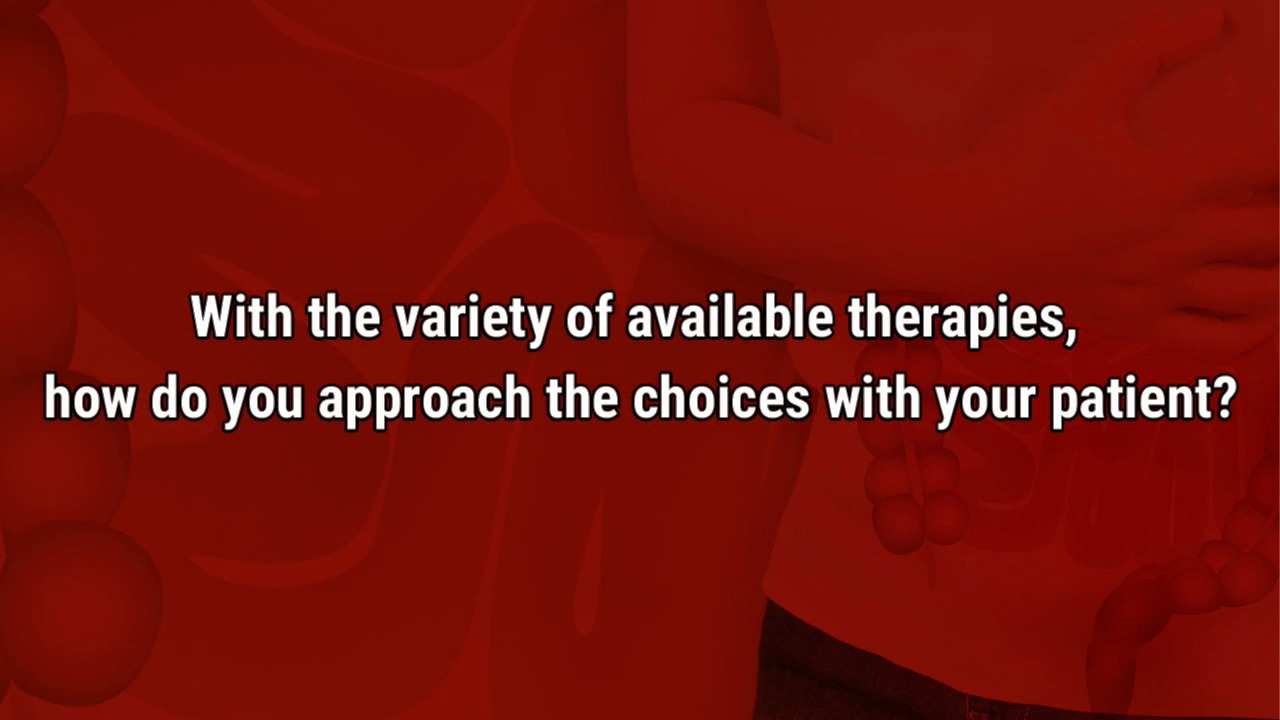Ulcerative Colitis Video Perspectives
Aline Charabaty, MD, AGAF, FACG
VIDEO: Predicting long-term outcomes in ulcerative colitis care
Transcript
Editor’s note: This is an automatically generated transcript, which has been slightly edited for clarity. Please notify editor@healio.com if there are concerns regarding accuracy of the transcription.
Patients with ulcerative colitis have different degrees of disease activity and severity and risk factors and require different types of follow-up. Patients who require closer follow-up are patients who are starting a new therapy for a flare, or we are adjusting the dose and the frequency of the therapy because they have developed a new flare on their current treatment; patients who have a history of disease difficult to control, these are patients who have been on and off steroids, they have been on several effective therapies already, these are patients who require close follow-up; and finally, patients who are at higher risk of colectomy.
Who are these patients? These are our young patients with UC, so younger than age 40; patients with extensive colitis; patients with severe endoscopic activity on colonoscopy, so deep ulcer, Mayo score of 3; patients who have been dependent on steroids; patients who have a history of hospitalization for severe flare, history of C. diff, CMV infection; and patients with a UC flare with a high CRP, high fecal calprotectin and a low albumin. These are patients at high risk of colectomy. Patients at high risk of colectomy, a patient recently started on a new therapy or adjusting therapy because of disease activity, and patients who’ve had disease difficulty to control, these are patients that require and benefit from a close follow-up.
If I’m starting a new therapy or adjusting treatment dose, I follow up on these patient a few weeks later to make sure we’re seeing a response, a month later, and after that, every 3 months, initially in the first year. And I typically do a colonoscopy after 9 to 12 months of clinical remission to really document endoscopic healing. Once patients are in a durable steroid-free remission, then I will follow up on these patient every 6 months if they are on a biologic or small molecule drug, and every 9 to 12 months, if they are on mesalamine.
And we follow clinical symptoms, we follow extraintestinal manifestation, but also we check inflammatory markers, such as CRP and fecal calprotectin, knowing that CRP and fecal calprotectin start to increase before the patient has symptoms of a flare. If I see those biomarkers going up, that gives me the opportunity to adjust therapy and prevent the flare before it happens.









